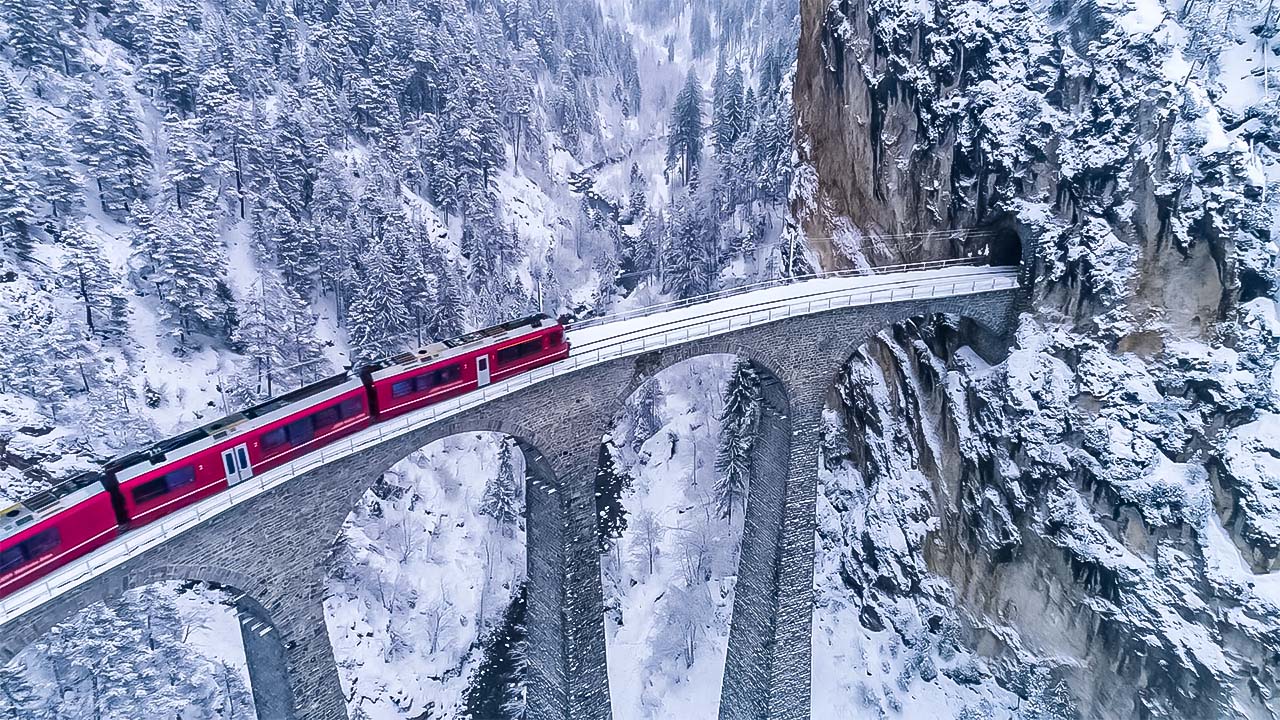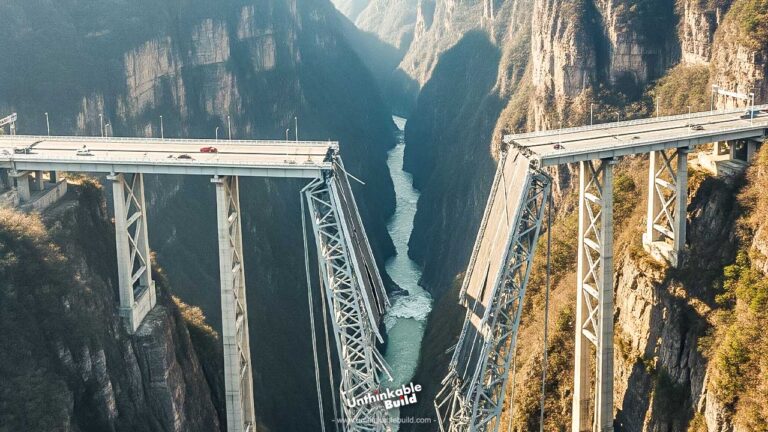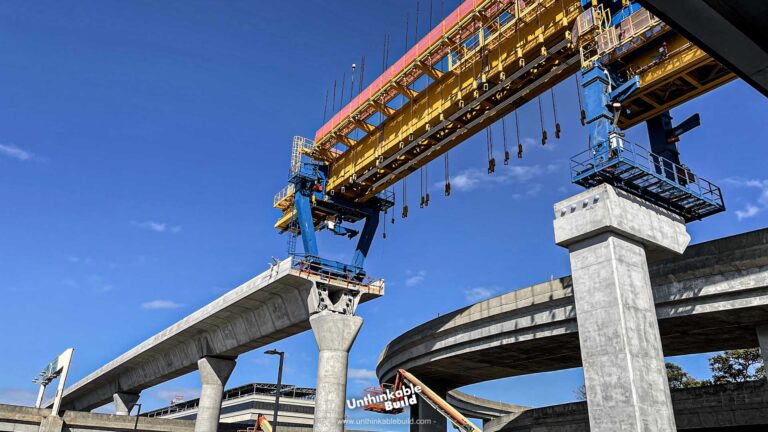China-Nepal Railway – World’s Highest Railway Tunnels in the Himalayas
In the heart of the Himalayas, where the sky meets the Earth and nature’s grandeur knows no bounds, a remarkable endeavor is taking shape. Amidst the breathtaking majesty of the world’s highest mountain range, a colossal infrastructure project is underway—one that seeks to bridge the gap between man and nature, ambition and engineering, in a way that has never been seen before.
Imagine a tunnel, a super tunnel, stretching for approximately 30 kilometers beneath the formidable Himalayan peaks, cutting through the very core of this mesmerizing landscape. It’s a project that goes beyond the ordinary; it’s an audacious fusion of cutting-edge technology and the timeless beauty of Mother Nature’s creation. China, with its relentless determination, is at the forefront of this monumental undertaking, striving to weave modernity into the tapestry of the Himalayas.
But what drives China to embark on such an extraordinary feat? What is the vision behind this audacious railway tunnel? And just how formidable is the challenge of building a passage of this magnitude through one of the world’s most awe-inspiring natural wonders?
Let’s find out!
Surprisingly, the idea for the China-Nepal Railway dates back four decades to when China’s Mao Zedong offered support to Nepal for such a project. However, it wasn’t until recently that this railway project started taking shape. The delay in its implementation was due to historical challenges faced by both China and Nepal, including technical and financial issues.
Also Read: Bhadla Solar Park – World’s Biggest Solar Farm in India
In 2022, China invested around $4.3 billion to kickstart the construction of the China-Nepal Railway. This railway project is a game-changer for landlocked Nepal, which has struggled with transportation issues due to its mountainous terrain. Once completed, it will connect three major Nepali cities, making travel much more accessible for its citizens.
The part of the railway in China stretches across Tibet and has already seen a significant influx of tourists in 2022. This is expected to boost Nepal’s tourism industry when travelers use the railway to visit Nepal. Moreover, the railway will reduce Nepal’s reliance on India for maritime transport, promoting foreign trade and economic growth.
However, building the China-Nepal Railway is no easy task. It’s considered one of the most challenging railway projects globally because it traverses through the Himalayas, a region with seismic zones and glaciers. The construction faces challenges like extreme weather conditions and the threat of mudslides, which make it highly complex.
One remarkable aspect is that out of the total 540 kilometers of the China-Nepal Railway, a staggering 540 kilometers consist of bridges and tunnels. 45 of these tunnels pass through the Himalayas, including a massive one called the Himalayas Tunnel.
The Himalayas, known for their formidable nature, present a herculean task for construction. China began building the Himalayas Tunnel in February 2023 and made impressive progress in just five months, excavating 1,680 meters. This is notably faster progress than similar projects in other countries. The entire tunnel is expected to be about 30 kilometers long, and China’s investment in this endeavor is anticipated to exceed $1.4 billion.
Despite the challenges, the Chinese construction team is on track to achieve a groundbreaking accomplishment by completing the Himalayas Tunnel before December 2024. This exemplifies China’s efficiency and scale in infrastructure projects compared to other nations.
The current routes from China to Nepal involve trucks carrying goods from Shigatse through the Gyirong border post to Nepal. The new railway will start in Lanzhou, a major railway hub in China, and go through Xining, Lhasa, and Shigatse before reaching the Nepali border.
In China, it will mostly follow the path of China National Highway 318, passing through several towns. In Nepal, the railway section is quite challenging because of the tough terrain in the Himalayas. Most of it, about 98.5%, will be either bridges or tunnels. There will be four stations along the railway, and it will end in Kathmandu. They also plan to extend the railway to Pokhara and Lumbini in the future.
This project is one of the most complex in the world because constructing a tunnel at high altitudes is an immensely challenging task, especially in the cold region of the Himalayas. The lack of oxygen at altitudes above 4,800 meters presents a significant challenge. To work in these conditions, the construction team must ensure a continuous supply of oxygen through specialized generators.
Technically, this railway project is set to become one of the most challenging in the world, given the need to traverse the formidable and delicate Himalayan range. However, with China’s impressive technological capabilities, it is deemed feasible, especially considering their successful construction of railways at even higher altitudes in Tibet compared to what is proposed for the Nepal-China railway.
Also Read: Turkey is Building World’s Largest Drone Army | Bayraktar TB2
To boost construction efficiency, China has deployed the enormous General Shield machine, a groundbreaking invention developed entirely within the country. This mammoth machine has a massive diameter of 16.07 meters and weighs 4,300 tons. It can excavate a tunnel segment equivalent to nearly six stories in a single pass, making it an essential tool for the Himalayas tunnel project. It uses advanced cutting-edge technology to cleave through soil layers and efficiently disposes of excavated earth via a conveyor belt mechanism. As it progresses, a reinforced support system, including precast concrete lining and steel arches, ensures tunnel stability.
Transporting construction materials and essential provisions for the workforce within China’s construction teams is a crucial task. However, high-altitude transportation poses significant risks due to the remote and challenging mountain environment. Historical records show tragic incidents, like tire blowouts, during the construction of similar projects in high-altitude regions. These conditions add complexity to transportation logistics in this project.
The proposed China-Nepal railway has raised curiosity, concern, and optimism in recent years, especially for India. India’s reservations stem partly from its non-participation in the Belt and Road Initiative (BRI), of which the railway is a part.
The question arises: why is China investing substantial resources in constructing the challenging China-Nepal Railway? Diplomatic ties between China and Nepal have been strong for decades. Nepal’s historical progress has been influenced by India. However, with its infrastructure and technological prowess, China is now committed to fulfilling its commitment to Nepal made over four decades ago.
This railway wasn’t just about infrastructure; it held the promise of reducing Nepal’s reliance on its neighboring nation, India, a reliance that had been painfully apparent during the 2015 Nepal blockade.
The China-Nepal Railway holds significant strategic importance for China. It not only aids Nepal’s development but also changes the geopolitical landscape of South Asia. The Himalayas have long isolated China from the Indian subcontinent, but this railway will establish direct connectivity with India’s railway network, reaching the Bay of Bengal. It will also serve as a key link in Southeast Asia’s railway networks. China’s Trans-Asian Railway Initiative aims to create an interconnected railway framework spanning ASEAN nations and connecting with the Eurasian Railway Network. This initiative enhances China’s geopolitical influence in the region and could counterbalance India’s rising influence in South Asia by emancipating Nepal from India’s dominance and establishing itself as a strategic linchpin.
However, concerns have arisen regarding Nepal’s limited capacity to review technical reports due to the absence of railway engineers within the department. Despite being established a decade ago, the department is predominantly staffed by road engineers. Nepal, which constructed its inaugural railway near the Indian border in 1927, only established a railway department in 2011 and has yet to recruit railway engineers to staff the department.
While the rail project promises to bring unprecedented connectivity and economic benefits, experts and environmentalists are growing increasingly concerned about its potential environmental consequences. The Himalayan region is known for its fragile geology, and any trans-Himalayan undertaking of such magnitude is likely to have significant environmental impacts. The proposed railway will traverse through the main central thrust, a geologically weak zone in the Himalayas. To minimize its adverse environmental effects, it is imperative to involve technical knowledge from geologists and other experts. Unfortunately, there appears to be a lack of effort in this direction.
Additionally, railway maintenance in the Himalayan region is expected to be exceptionally challenging, given the rugged terrain and environmental sensitivities.
What are your thoughts on this monumental railway initiative? Please share your insights in the comments section below. Thank you for watching this video, and stay tuned for more interesting content coming soon.







